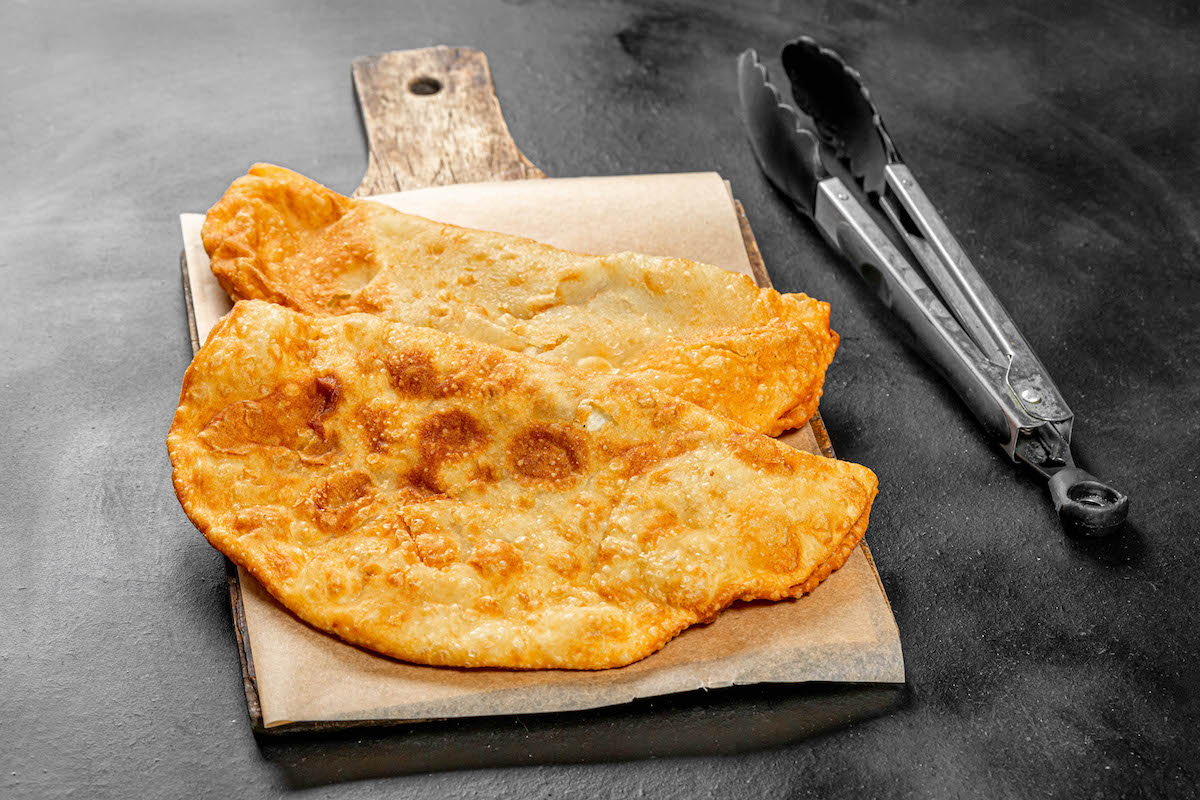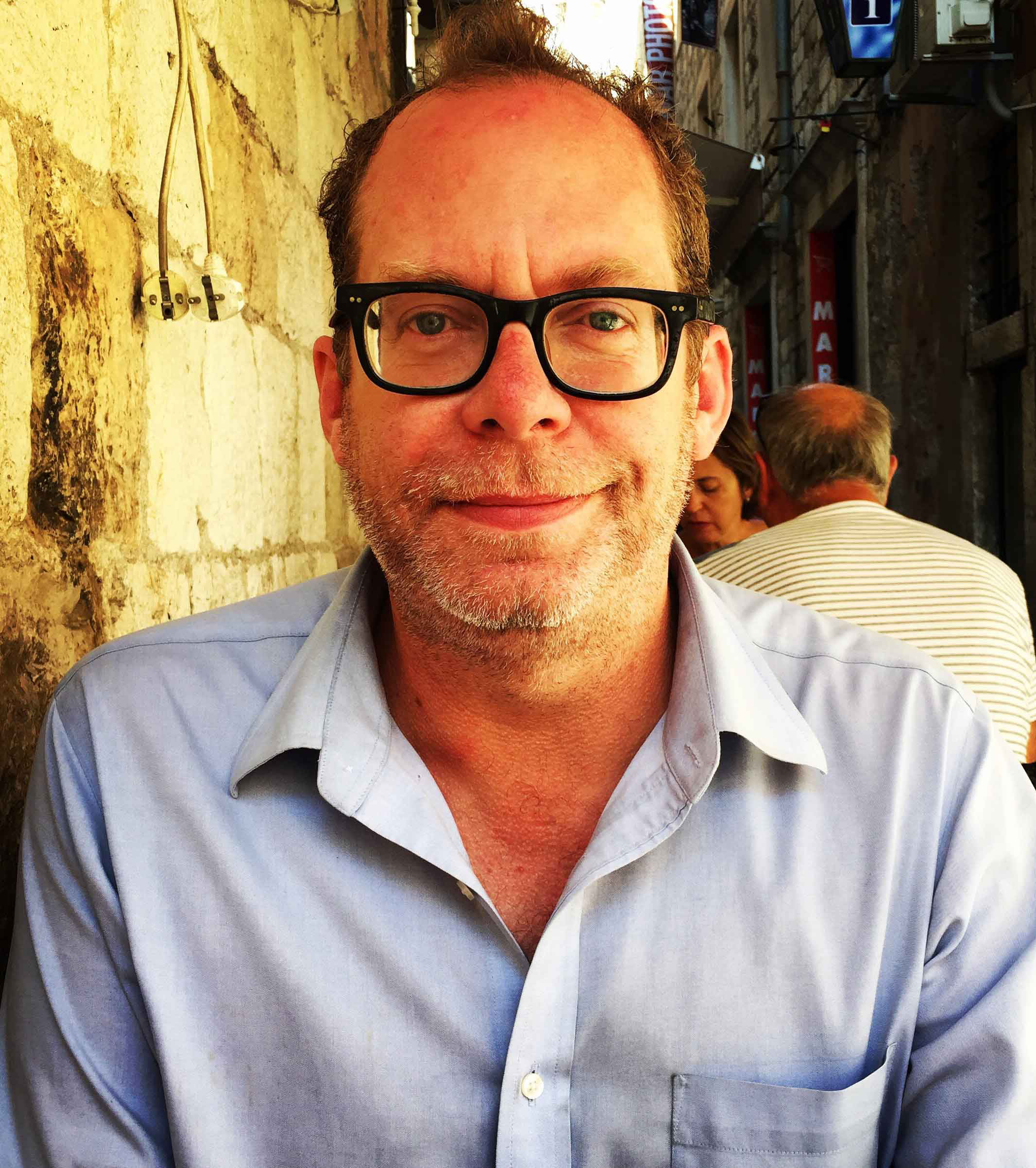In some ways, New York City is the world in microcosm. There are reportedly 600 different languages spoken throughout the five boroughs. When you go to the ATM in, say, hyper-diverse Jackson Heights, Queens, you’re given the option of doing the transaction in one of 16 different languages. 
Here are some other staggering statistics: 36 percent of the population of New York City is foreign born. New York is home to the largest population of Puerto Ricans outside of Puerto Rico, the largest Asian-Indian population in the Western hemisphere, the second-largest population of Koreans outside of Korea, the largest amount of Arabs in North America, the biggest Jewish population outside of Israel, and the largest number of Chinese outside of Asia. (In fact, there are eight Chinatowns here.)
There are pockets of communities of Sri Lankans and Liberians on Staten Island, Albanians in the Bronx, Central Asian Tajik-speaking Bukharian Jews in Rego Park, Greeks and Egyptians in Astoria, and Ukrainians in Brighton Beach. There are only 700 people in the world who still speak Seke, a rare language from Nepal—and 100 of them live in Brooklyn’s Flatbush neighborhood.
Travel is great. But if you can’t get on an airplane and fly over an ocean, just hop on the subway for 45 minutes. Here are the best neighborhoods to visit when you want to feel like you’re in a different country, places to do an outer boroughs eating excursion.
Chinatown (Flushing, Queens)
Most visitors to New York end up at some point in Chinatown in Manhattan. A lot of tourists might not realize that there are also Chinatowns in Elmhurst, Queens; Bensonhurst, Brooklyn; Homecrest, Brooklyn; Little Neck, Queens; Forest Hills, Queens; and Sunset Park, Brooklyn.
And then there’s Flushing. Take the number 7 train to the end of the line, and emerge from the platform and you’ll be engulfed in this bustling Queens neighborhood, like you’ve just been deposited into some random city in China.
It wasn’t always this way. Until the 1970s, Flushing was mostly Jewish and Italian. Then the Chinese from a handful of regions in China started coming.
Today, the neighborhood is 70 percent Asian and the biggest and fastest growing Chinatown in New York. And it’s unique in that there are restaurants serving the cuisine of very under-represented Chinese regions in the United States.
Sure, it’s easy to find Hunan and Szechuan restaurants, but in Flushing there are restaurants serving the cuisine of Dong Bei, a region in China that is just north of North Korea. Also, there are restaurants serving food from Shandong, Shaanxi, and Xinjiang, among other regions in China.

Here are a few restaurants to check out in Flushing:
- Corner 28: Located on 40th Road between Main and Prince Streets, this diminutive counter restaurant is legendary for the crispy duck bao buns it serves.
- Golden Palace Gourmet: Serving up the cuisine of Dong Bei, the region formerly known as Manchuria, Golden Palace Gourmet excels at grilled meat.
- Nan Xiang Xiao Long Bao: This busy spot specializes in xiao long bao, or Shanghai soup dumplings, and they’re some of the best in the city.
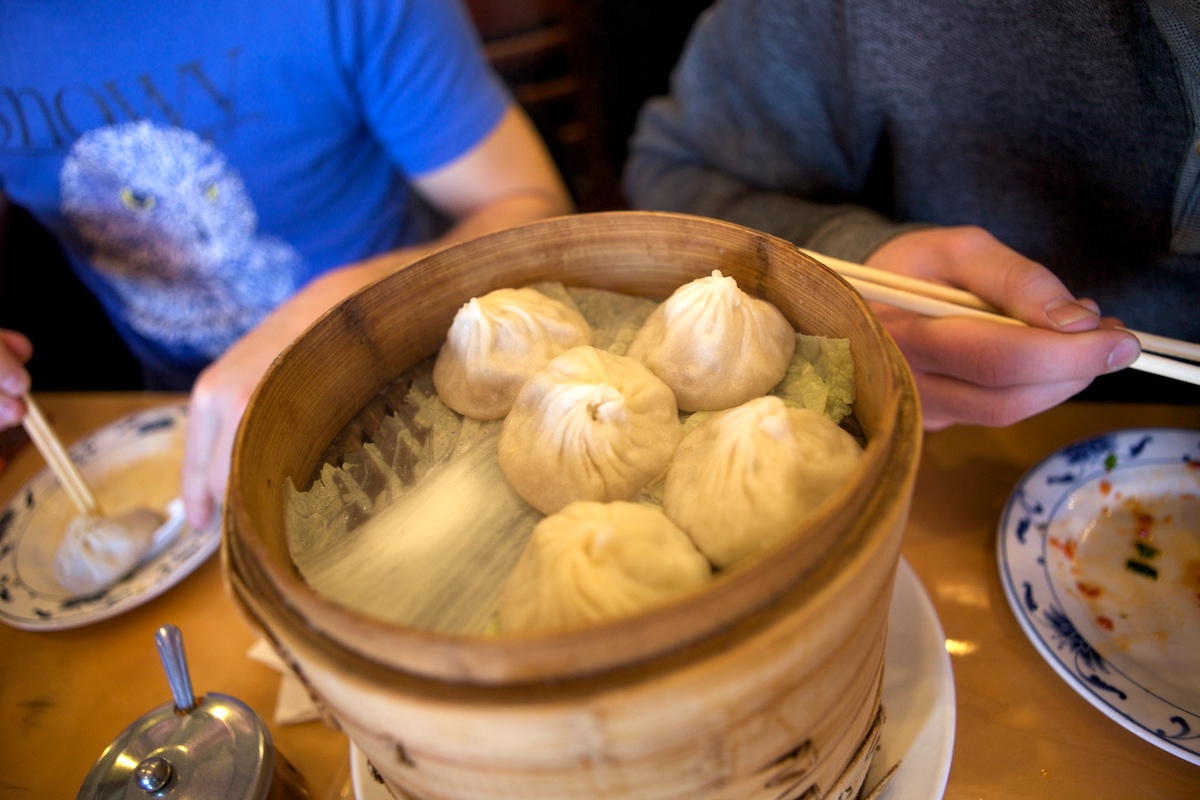
“Himalayan Heights” (Jackson Heights, Queens)
Located in Queens and easily accessible by the number 7 subway train line (aka the “International Express”) as well as the E, F, and M trains, Jackson Heights was once very much known for its large Indian community. New Yorkers still call it “Little India,” but that’s a misnomer these days as many middle-class Indians have moved to the suburbs.
Today Jackson Heights is crammed with other Himalayan communities: Tibetan, Nepalese, and Bangladeshis are ever present. In fact, Jackson Heights is unofficially referred to as the “second capital of exiled Tibetans” (after Dharamsala in India). The neighborhood is also unofficially nicknamed “Himalayan Heights.”
But fascinatingly, take a stroll down Roosevelt Avenue and the demographics shift from Himalayan to Hispanic. The street is flanked by bars, restaurants, and food carts frequented by Colombians, Ecuadorians, and other people who immigrated here from Latin America.

Here are a few restaurants to check out in Jackson Heights:
- Birria-Landia: The current craze for birria tacos can be traced back to this food truck, which is often planted on the corner of 78th Street and Roosevelt Avenue.
- Phayul: Situated right at the bustling crossroads of Roosevelt Avenue and 74th Street, this Tibetan restaurant serves up excellent momos, or Tibetan dumplings. The adventurous might want to stick a spoon in the surprisingly good sour yak milk soup.
- Yun Cafe: One of the few Burmese restaurants in New York City, Yun is a fun adventure to seek out because it’s located inside the Jackson Heights-Roosevelt Ave. subway station.

Koreatown, Murray Hill (Flushing, Queens)
If you’ve been to Chinatown in Flushing, you might think you’ve seen the whole neighborhood. Nope. There’s a whole other swath and it’s crammed with Koreans.
Sure, the K-Town in Manhattan is a fun experience, but it doesn’t compare to the Koreatown in the Murray Hill section of Flushing.
Mostly only accessible by the Long Island Rail Road (LIRR), the heart of Koreatown is located in the streets around the Murray Hill LIRR station. Hop off the train and you’ll be dazzled by the sight of signs written in the Hangul, or Korean, alphabet. The streets are flanked by karaoke bars, tea cafes, and restaurants with sandwich boards advertising dishes like entrails, intestines, and various organ meats.
But it’s not all adventurous fare here. There are restaurants serving up Korean barbecue, which is cooked right on the table, as well as excellent Korean staples such as kimchi stew and variations on the theme of bibimbap.
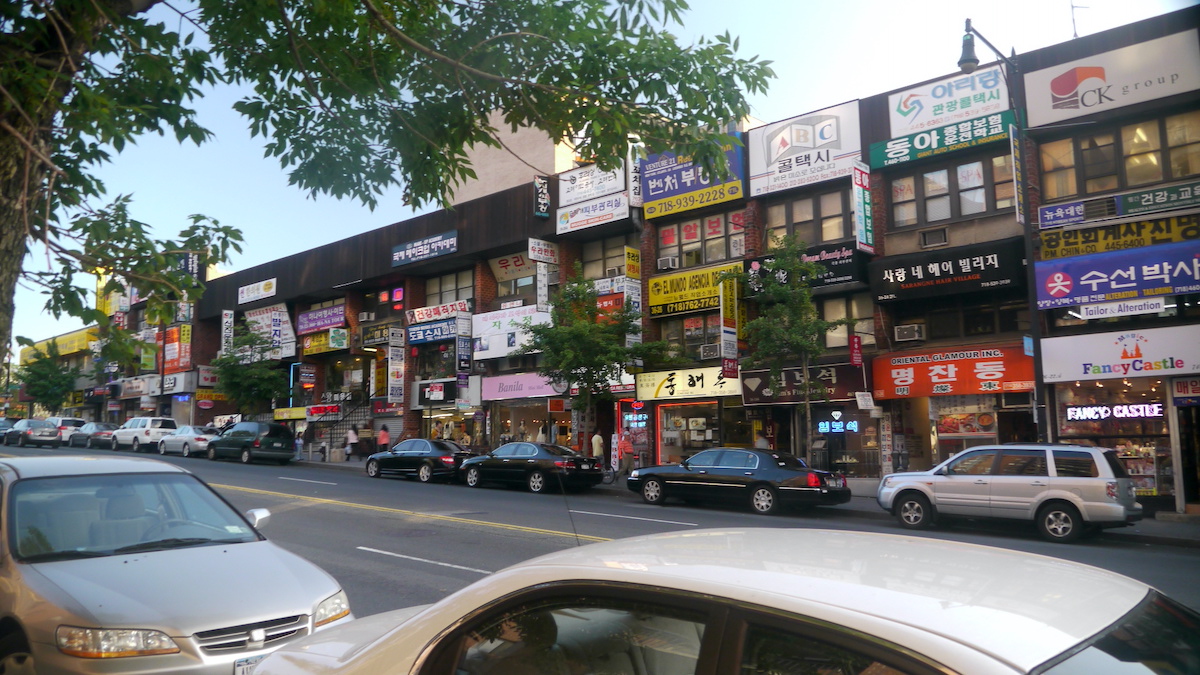
Restaurants to try in Murray Hill:
- Dae Sung: Come here for the kalguksu, a soup laden with silky noodles.
- Geo Si Gi Gamjatang: Set on Northern Boulevard and 153rd Street, this popular Korean spot is famed for its hearty stew bobbing with various ultra-tender meats. You can even get it with raw octopus.
- Parksanbal Babs: Located at 162nd Street and Station Road, this Korean eatery serves only one thing: an addictive long-simmered beef and cabbage soup. The only decision you have to make is: spicy or not so spicy?

Related Reading: Craving more Korean? Check out our post on the best Korean BBQ in NYC.
Little Italy (The Bronx)
The Little Italy in Manhattan used to be made up of several streets, stretching from Lafayette to the Bowery and Canal to Houston Streets. But as Italian immigrants began moving up the financial ladder into the middle class, they moved out to Brooklyn and beyond. Today, what’s left of Little Italy is a few blocks of Mulberry Street, lined with schlocky and terrible Italian-American restaurants.
For a much better Little Italy experience, head to Arthur Avenue in the Bronx. Most of the people strolling down the street are locals or New Yorkers from other neighborhoods who came here to shop and have lunch.
Be sure to stop into the Italian-accented Arthur Avenue Market, an Old World-tinged food hall from 1940 with fruit and vegetable vendors, stalls selling cured meat, and there’s even a bar in the middle of the high-ceilinged room.
The neighborhood also has a sizeable Albanian community and there are excellent Albanian restaurants and cafes dotting the streets around Arthur Avenue.
To get there, take the B or the D subway trains to Fordham Rd. and then walk for 15 minutes.
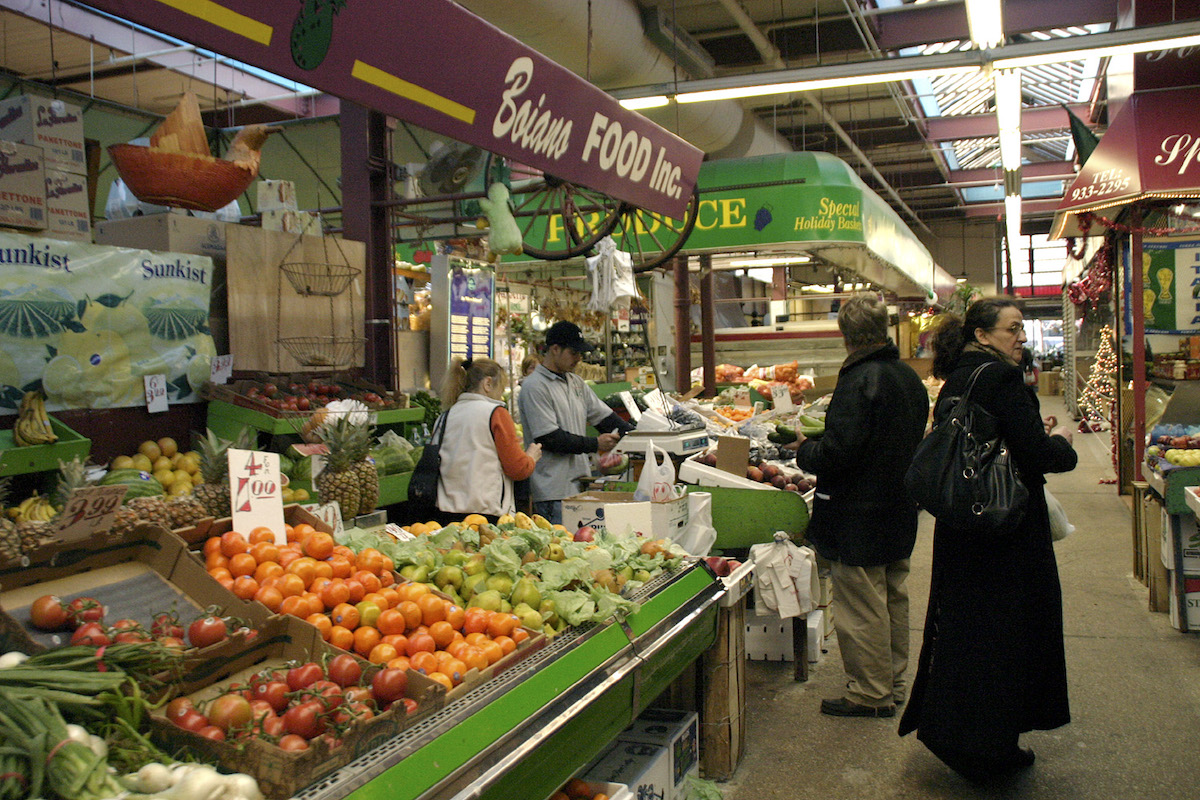
A few restaurants to check out in Little Italy in the Bronx:
- Çka ka Qëllu: Not all the Albanian rakia, or brandy, will help you pronounce the name of this restaurant. That’s because this excellent Albanian restaurant doesn’t even serve booze (nor do they let you BYO). But that’s okay, because when the food is this good, you can get drunk via your taste buds. Expect a lot of juicy grilled meats, hearty stews, and delicious cheese spreads.
- Mario’s: This old-school Italian-American eatery is an Arthur Avenue institution, having first fired up its pasta-boiling burners in 1919.
- Zero Otto Nove: All the pan-Italian staples, plus several pizzas, are on the menu at this popular and classic Arthur Avenue eatery.
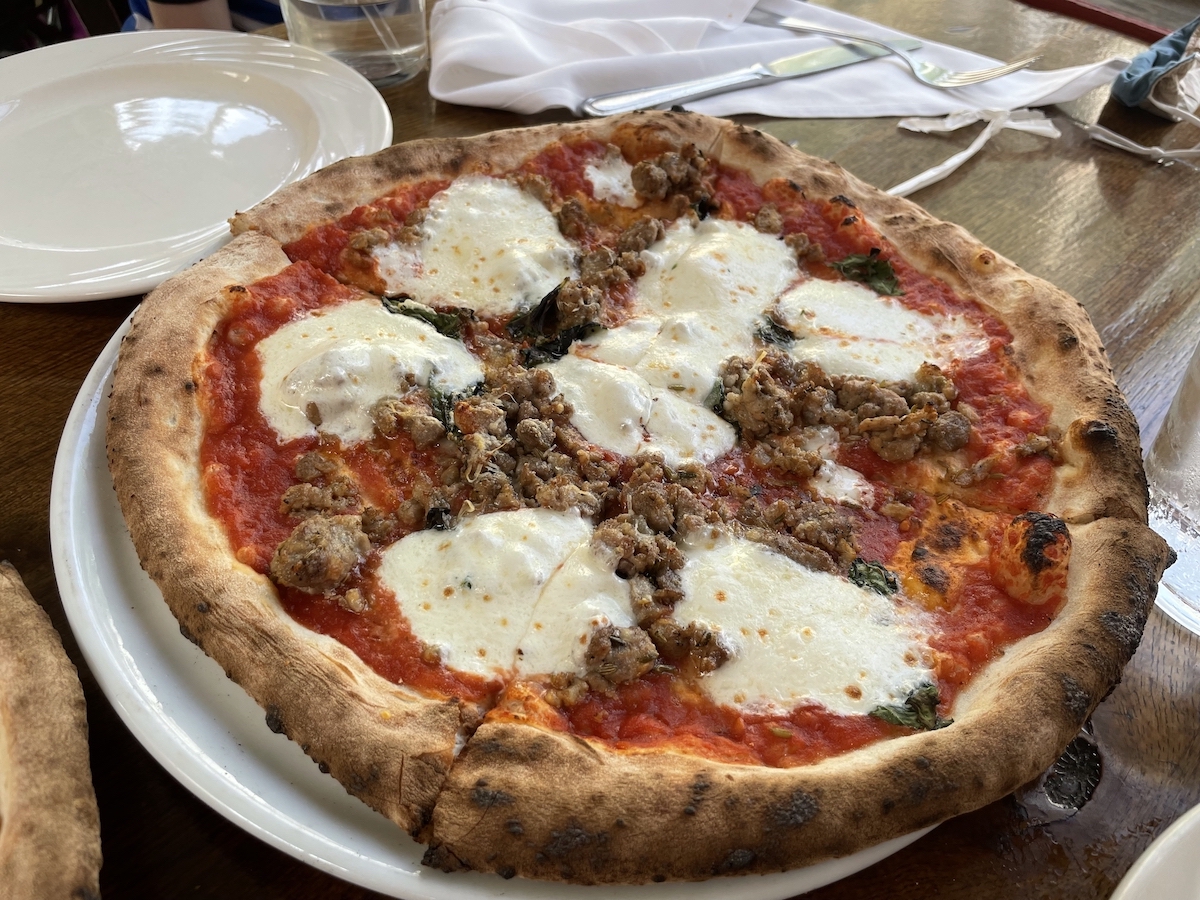
Little Poland (Greenpoint, Brooklyn)
New York City has over 200,000 Polish and Polish-American denizens, one of the largest populations of Poles outside of Poland. And the epicenter of all things Polish in the Big Apple is Greenpoint, Brooklyn where you can stroll down the street—particularly around Manhattan and Greenpoint Avenues—and every second sign will be in Polish.
There are Polish butchers, Polish groceries, and, of course, Polish restaurants. And there are a legion of old babushka-clad grannies strolling the streets.
Some of the Polish presence in Greenpoint has diminished over the years—there once was a time when Greenpoint, Brooklyn was 80 percent Polish—but there are still plenty of restaurants where you can feast on pierogies and wash them down with a pint of crisp Żywiec beer.
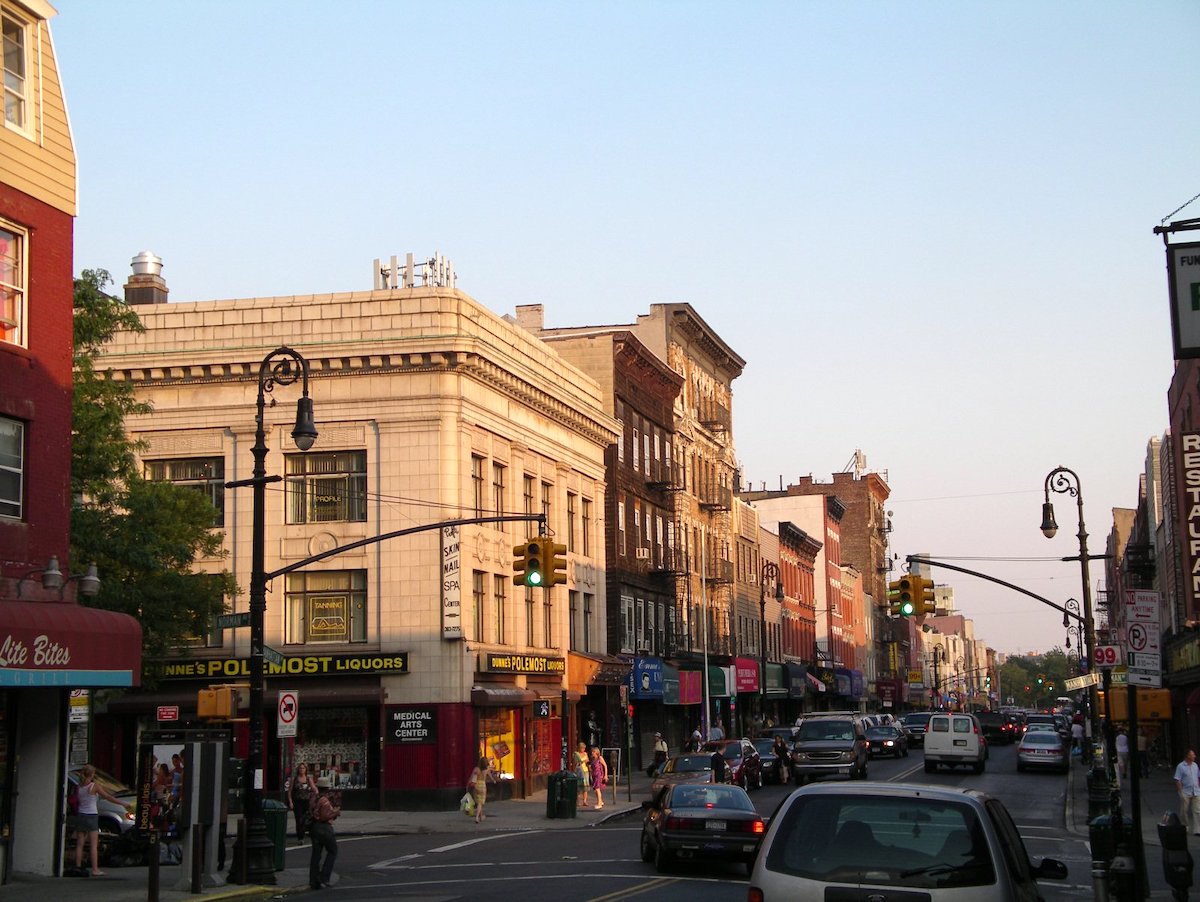
Restaurants to try while in Little Poland:
- Karczma: The Polish word for “tavern,” this rustic ambient eatery at 136 Greenpoint Avenue serves up all the heavy Polish staples like bacon-studded lard, sauerkraut-and-meat-stuffed pierogies, and ham hocks roasted in beer.
- Pierozek: The focus at this rustic restaurant is pierogies, the ubiquitous dumpling that is one of the main staples of Polish cuisine. You can get more traditional meat-and-potato-stuffed dumplings or go rogue and order the pierogies stuffed with things like barbecue chicken, cheddar cheese, or jalepeños.
- Polka Dot: Perhaps to offset the hearty Polish fare of other eateries in Greenpoint, Polka Dot goes heavy on the soups and the meatless dishes. You can still tuck into a bowl of pork goulash or wield a kielbasa, but there’s also potato pancakes, borscht, and veggie-stuffed zucchinis.
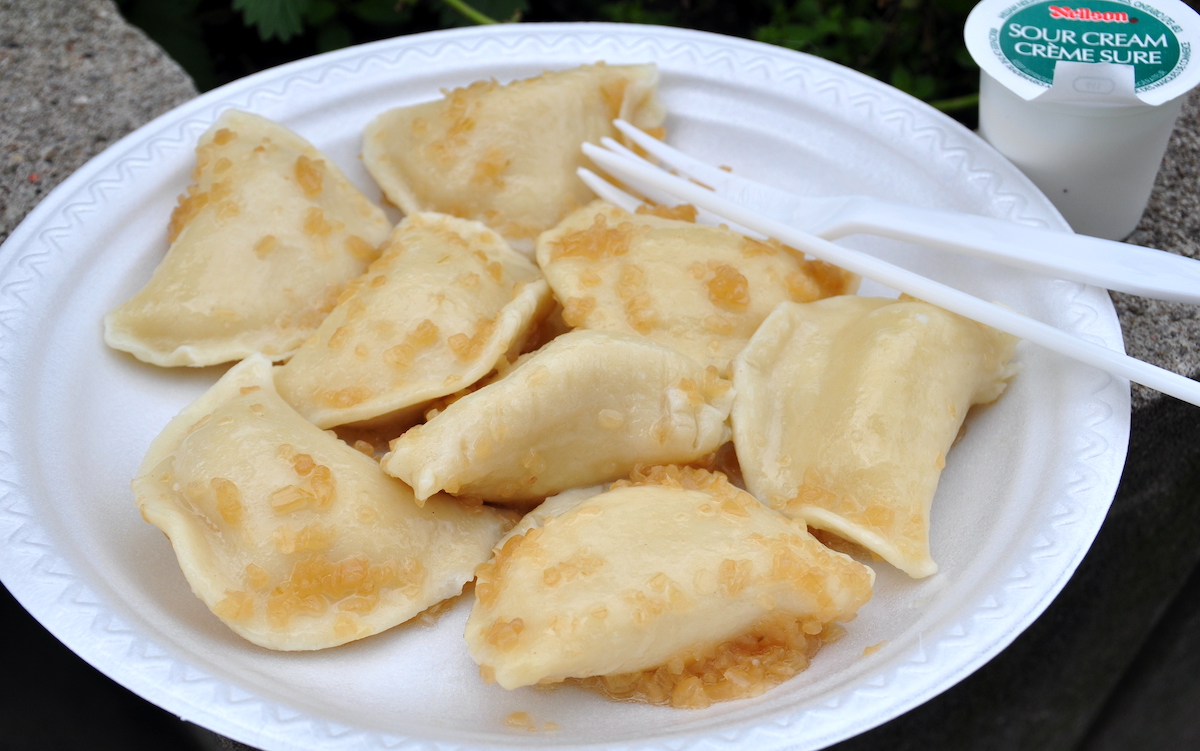
Little Ireland (Woodlawn, the Bronx)
One of the most off-the-radar enclaves, this northern Bronx neighborhood is the home-away-from-home of New York’s Irish community. Every Irish person who comes through New York to settle here ends up for some amount of time in Woodlawn.
For the visitor, stick to Katonah Avenue. It’s not exactly Temple Bar in Dublin, but for about five blocks, the street is lined with traditional Irish pubs. Before settling into a pub with a pint of Guinness in front of you, pop into the Shamrock Irish Giftshop to browse the crystal glassware from Galway and Irish-made jewelry.
The neighborhood is named for the massive adjacent cemetery that nearly envelopes the district. If the weather is nice, take a stroll. The graves of Miles Davis, Herman Melville, Dorothy Parker, Duke Ellington, Celia Cruz, and Irving Berlin are here.
From Grand Central, jump on a Harlem line train to the Woodlawn stop. The journey takes about 30 minutes.
Pubs and restaurants to visit while in Woodlawn:
- The Curry Spot: Modern interpretations of Indian dishes, including a lot of lamb and goat on the menu.
- Keane’s: The Keane family has been in the Irish pub biz in New York for four decades. The menu here is heavy on comfort food and Irish staples. Located at 4342 Katonah Avenue.
- Rambling House: You’ll hear a lot of Irish accents in Rambling House, a pub/restaurant at 4292 Katonah that serves fish & chips, shepherd’s pie, and a hearty Irish breakfast.
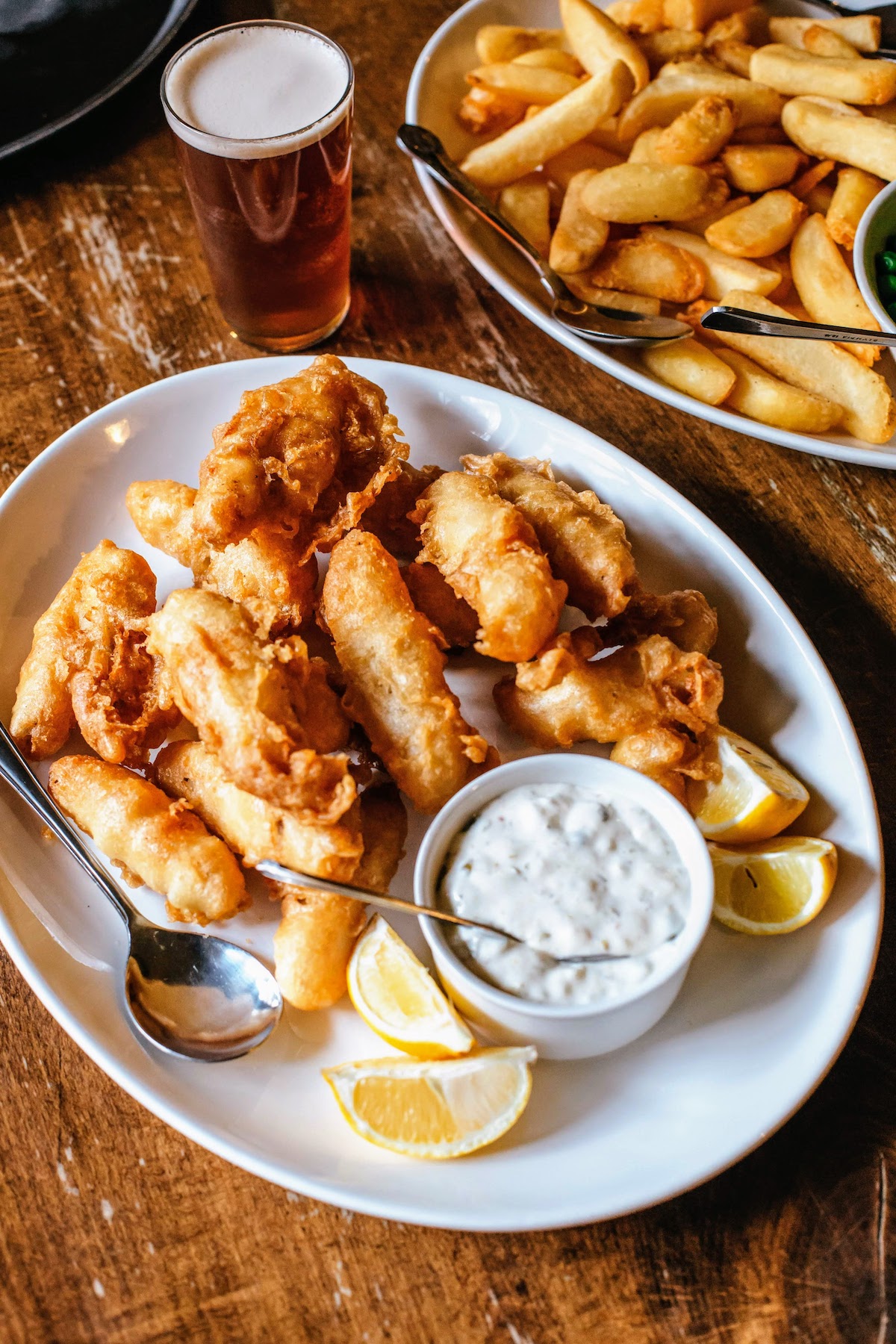
Little Sri Lanka (Tompkinsville, Staten Island)
One of the largest communities of Sri Lankans outside of Sri Lanka, Tompkinsville is about a 15-minute walk from the (free) Staten Island Ferry. Home to about 5,000 Sri Lankans, the neighborhood is crammed with Sri Lankan restaurants and food shops.
First, stop by the Sri Lankan Art & Culture Museum, the first museum outside of Sri Lanka dedicated to the art and culture of this South Asian nation.
And if all that artifact-gawking builds up an appetite, there are a number of great Sri Lankan restaurants nearby. For the uninitiated, Sri Lankan cuisine is vaguely similar to Indian food, but coconut milk is much more prominent in the former. One word of warning: Sri Lankan is one of the spiciest cuisines on the planet.
Insider’s Tip: If you love fiery food, make sure to read our post on the spiciest foods in New York.
Pop into Lanka Grocery to browse the aisles crammed with food products that you can mostly only get in Sri Lanka. If you want to try cooking at home, the shop has various curry mixes and Sri Lankan condiments like coconut sambol.
A few restaurants to dine at in Little Sri Lanka:
- Ceylon Curry: Located in the cluster of Sri Lankan eateries and food shops (such as Lanka Grocery), Ceylon Curry serves up mutton roti and various fish and chicken curry options.
- Lakruwana: Tastefully bedecked with Buddha statues and other Sri Lankan decorative items, Lakruwana is one of the nicest Sri Lankan eateries on Staten Island. If it’s the weekend, there will be a vast all-you-can-eat buffet on offer.
- New Asha: The oldest restaurant in Little Sri Lanka, four-table New Asha is a no-frills place on the eyes, but highly explosive on the taste buds. Located at 322 Victory Boulevard.
“Regostan” (Rego Park, Queens)
A few facts about Rego Park: it was the setting for the CBS sitcom The King of Queens; Art Spiegelman’s graphic novel Maus is set in the Queens neighborhood. And Rego Park is nicknamed “Regostan” because of the large population of Bukharian Jews who hail from the Central Asian republics of Turkmenistan, Tajikistan, and Uzbekistan.
Bukharian Jews began immigrating to New York in the 1970s and today there are 50,000 of them, mostly living in and around Rego Park, making the population the second biggest in the world after Israel.
The cuisine of Bukharian Jews has been highly influenced by the Silk Road. Think of it as having elements of Central Asia, Southeast Asia, Persia, and China. Slow-cooked rice dishes, called plov, and seasoned with cumin and topped with lamb and beef, are very popular. So is grilled meat.
The M and R subway trains will deposit you right in the center of “Regostan.”

Here are some places to consider eating in Rego Park.
- Cheburechnaya (9209 63rd Dr, Queens): This 20-year-old restaurant at 9209 63rd Drive is the classic Regostan eatery, serving up Central Asian dishes such as cheburek, manty dumplings, and baked meat-filled pastries called samsa.
- Greenway Health & Pharmacy: A drugstore/butcher shop/glatt kosher market where you can pick up some Pepto Bismol and delicious Uzbek plov. Located at 99th St. and 66th Ave.
- Marani: It’s not just Central Asian fare in Rego Park. In fact, the culinary offerings here are quite diverse. Case in point: this kosher Georgian restaurant is worth the journey, serving up crispy baked khachapuri and delicious lamb-stuffed khinkali dumplings.
